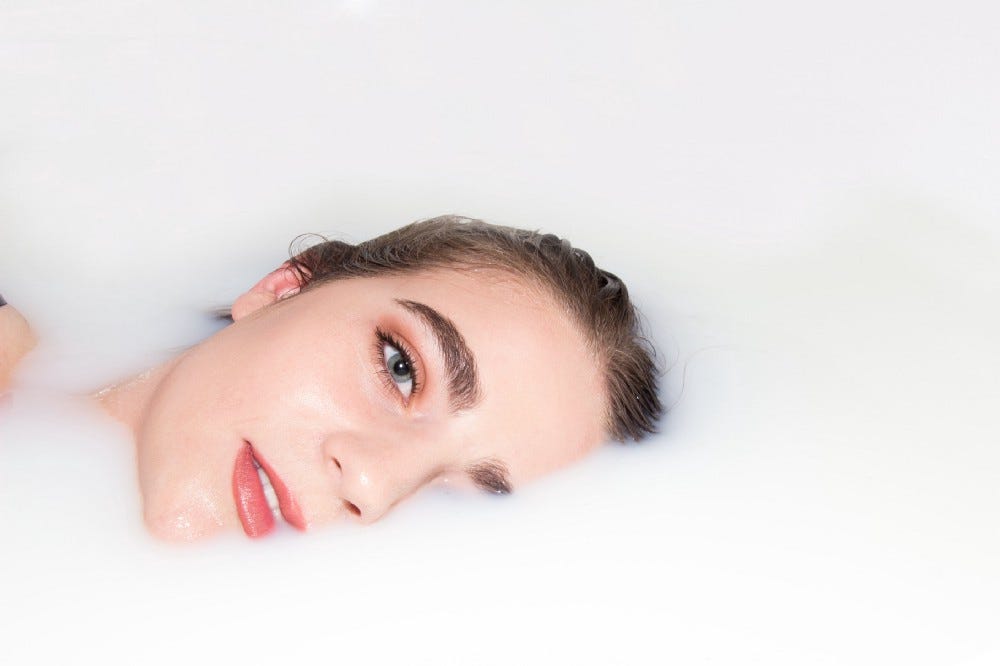
If you stay up to date on news in the skincare community, you may have seen or heard the controversy in the past several years around the use of the ingredient Retinyl Palmitate. If not, keep reading to learn where the controversy originated, and dive into the science surrounding it.
Retinyl Palmitate, sometimes written as Vitamin A Palmitate, is a synthetic alternative for Retinyl Acetate, a natural form of Vitamin A. Companies use it in a variety of skincare products from sunscreen to foundations to anti-ageing creams. You might also have heard of the popular anti-ageing skincare ingredient retinol — also known as Vitamin A. Retinyl Palmitate, like Vitamin A, is an antioxidant that encourages the growth of new skin cells, which explains why it is popular in products like wrinkle creams and serums.
The debate at hand exists between doctors (mainly dermatologists) and research scientists. A variety of sources and journals have published conflicting studies and reviews describing the potential effects, or lack thereof, of using Retinyl Palmitate. These conflicting attitudes, all coming from reputable sources, make it impossible as a skincare shopper to deduce the truth. Is Retinyl Palmitate safe?
A U.S National Toxicology Program study, published in 2012, sought to assess the risk of Retinyl Palmitate. They exposed mice to synthetic sunlight for four hours per day, and then applied creams containing Retinyl Palmitate. Mice treated with Retinyl Palmitate and Retinoic Acid creams, in addition to sunlight exposure developed more tumours per animal, and faster. This was compared to groups of mice exposed to sunlight and not treated with cream. These results were also compared to mice treated with just the carrier cream (no Retinyl Palmitate or Retinoic Acid) and exposed to sunlight, as well as other control groups. These findings led the scientists to conclude that Retinyl Palmitate and Retinoic Acid increase not only the likelihood of developing tumours in mice but also the speed at which the tumours develop.
Another study published in 2005 analyzed the effects of treating mouse lymphoma cells with Retinyl Palmitate and exposing them to UV-A light. UV-A rays from the sun can penetrate more deeply into the skin than UV-B rays. The researchers found that the mutation frequency of the cells (this is basically what leads to cancer) was three times higher when cells were treated with Retinyl Palmitate and exposed to UV-A. This is compared to cells just exposed to the UV-A light. They concluded that these results suggest the danger of Retinyl Palmitate comes from combination with exposure to UV-A rays.
The American Academy of Dermatology (AAD) strongly criticized those using the NTP study and the 2005 study for generating public confusion and misinformation. They countered this research with the argument that Retinyl Palmitate is FDA approved. However, the FDA stamp of approval does not necessarily indicate 100% safety. They AAD cited an independent analysis of the available research, written by a top dermatologist who argued that the evidence demonstrating the correlation between Retinyl Palmitate and cancer is invalid. He argued that other antioxidants work together to alleviate the risk of free radical formation — the event that damages cells and causes cancer. He also states that the mice in the study are far more susceptible to UV radiation and skin cancer than humans, even without Retinyl Palmitate exposure.
Retinyl Palmitate is rated an 8 on Think Dirty, as we believe the potential carcinogenicity and lack of substantial evidence to the contrary merits caution. This is especially important when it comes to applying this ingredient on a daily basis. We always err on the side of caution when it comes to the safety of daily skin products, but above all we want you to be able to make your own informed decisions. Especially as during the warm summer months where you start applying sunscreen more often. We want you to be as safe as possible!
1Disclosure: We are a professional review and product rating website and mobile app that receives compensation from the companies whose products we review and rate. We are independently owned and the opinions expressed here are our own interpretation of a trusted source.
Think Dirty Ingredient Breakdown: Retinyl Palmitate was originally published in Think Dirty on Medium, where people are continuing the conversation by highlighting and responding to this story.